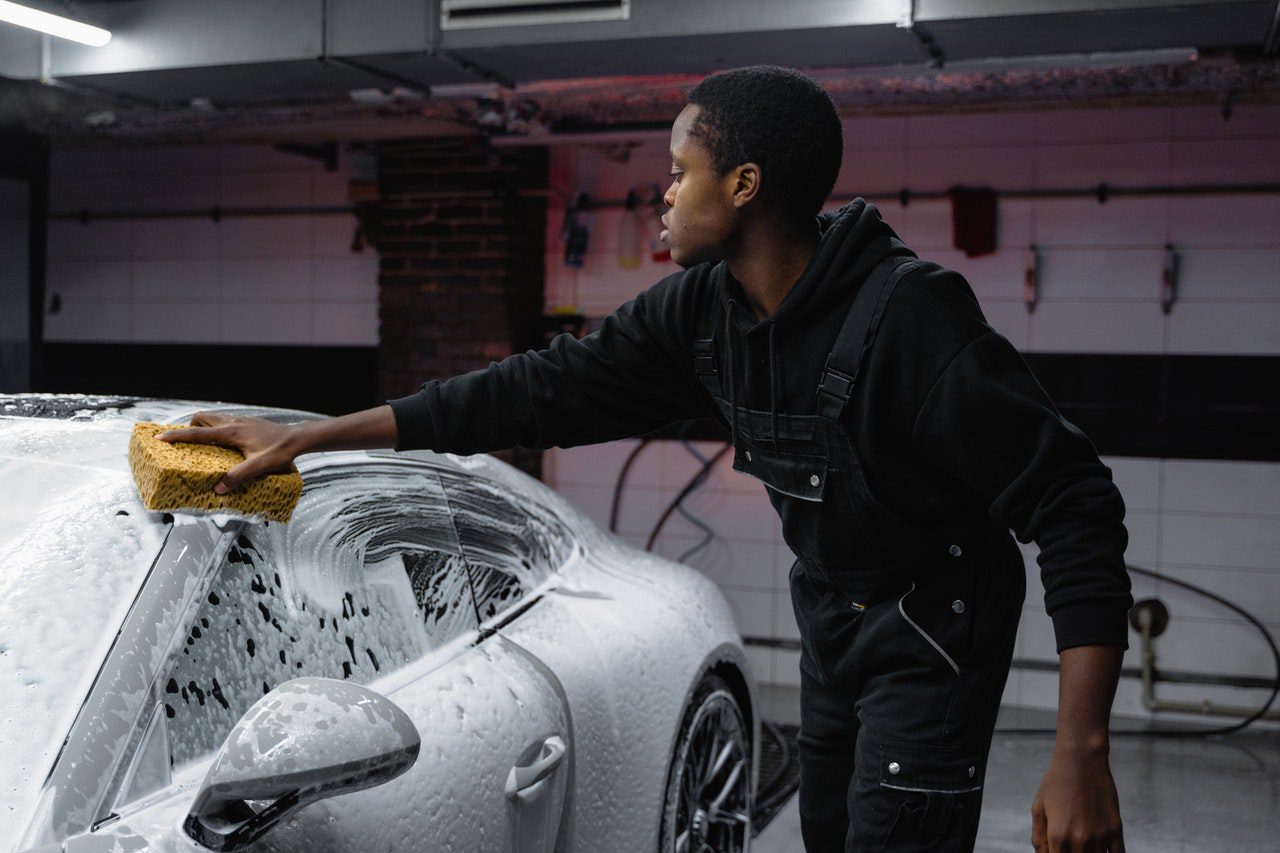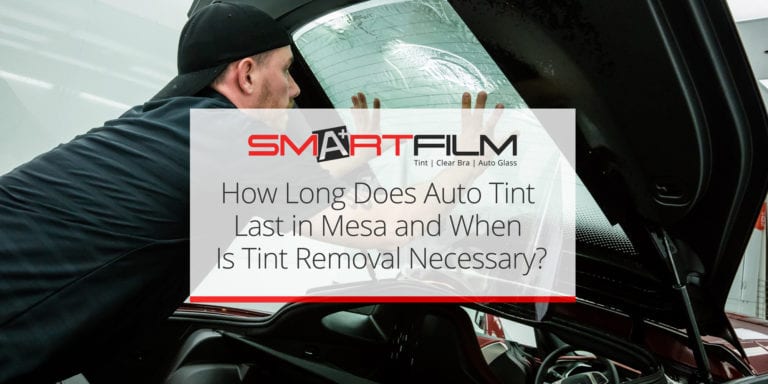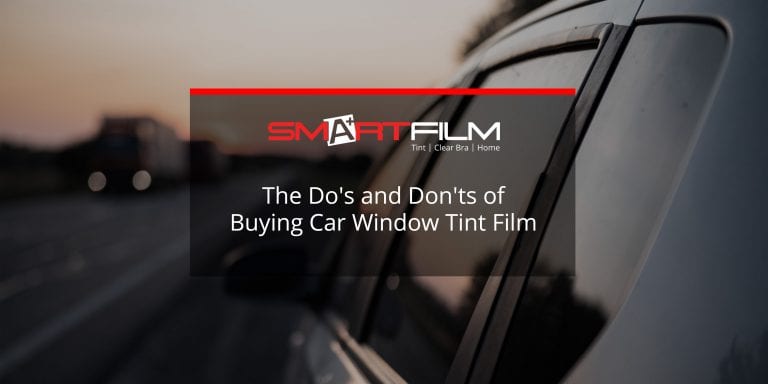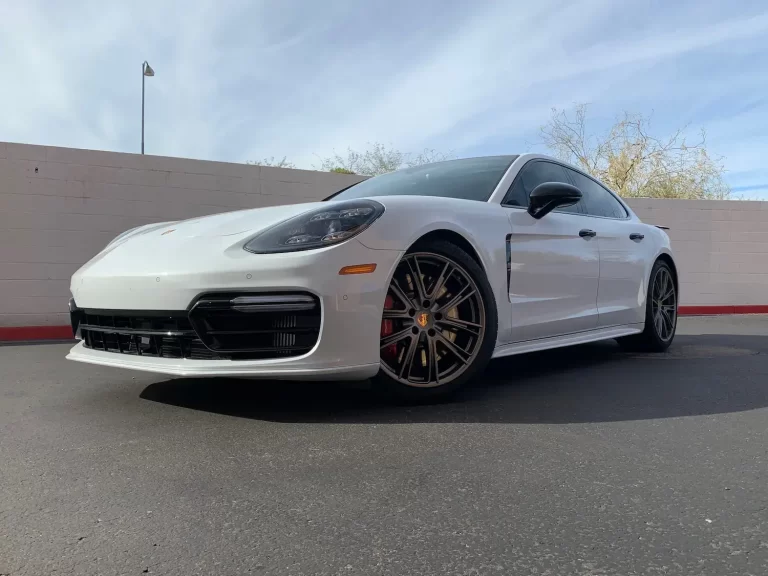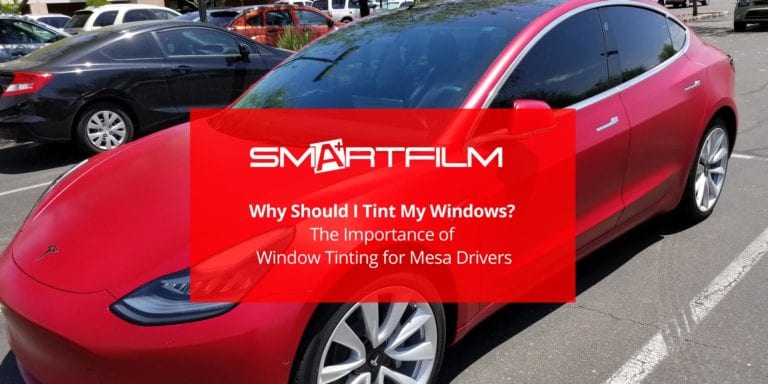Stay Cool, Look Sharp: Top Legal Car Window Tint for Arizona Roads
If you live in Arizona, you already know that your car isn’t just a way to get around; it’s your escape pod from the sun. And when temperatures hit 115°, tinted windows aren’t just about style; they’re about survival.
But here’s the thing: not all window tints are created equal. Some fade fast, crack, or peel. Others might look great but violate Arizona’s strict car window tint laws, leaving you with a ticket and a headache.
That’s why premium car owners, those driving Teslas, Audis, lifted trucks, and sports cars, turn to high-performance, legal car window tints built to handle the heat.
In this guide, we’ll explain what legal tint levels in Arizona are, which materials block the sun’s rays, and how the right tint can protect your skin, preserve your interior, and keep your ride looking sleek year-round.
This isn’t about going cheap but getting it done right. Legal, powerful, and built to last.
Let’s dive into the tints that do more than look good; they work hard for Arizona roads.
How Desert Heat Ruins Your Auto
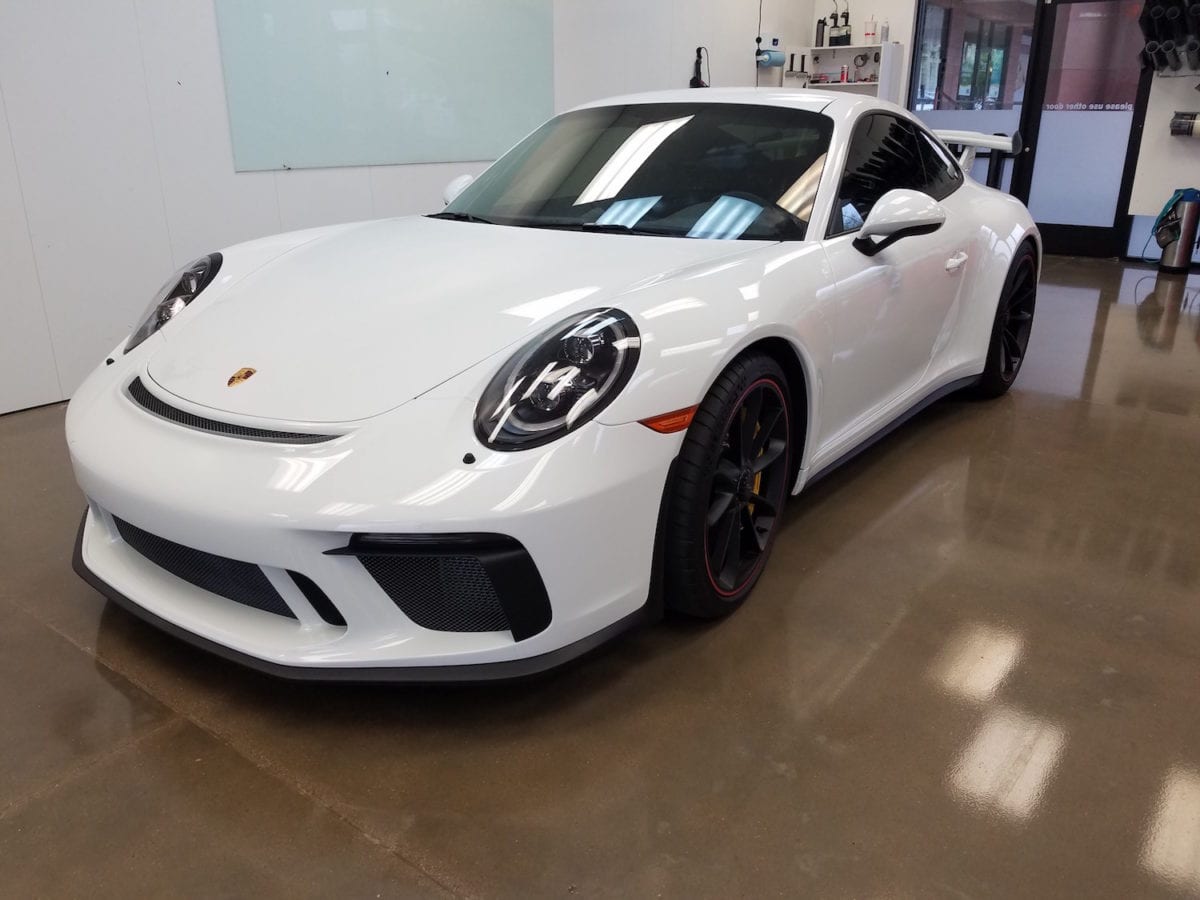
Arizona is known for its scorching temperatures, often reaching over 110°F during peak summer months. Many drivers don’t realize that the interior of a parked car can exceed 140–150°F within 30 minutes, even with the windows cracked. That kind of heat doesn’t just cause discomfort; it contributes to premature wear and tear on your vehicle.
Installing legal car window tint helps significantly reduce interior heat. High-quality ceramic window films can block up to 60% of solar energy—legally—without reducing visibility.
This keeps your vehicle cooler, helps your AC system work more efficiently, and protects the vehicle’s surfaces from long-term thermal damage.
Sun Exposure
Arizona receives almost 4,000 hours of sunlight annually, and most of that comes with intense UV exposure. UV radiation can degrade almost every surface in your car: dashboards, leather, upholstery, and even electronic displays.
The solution? Choose a window tint that blocks 99% or more of harmful UV rays, which helps reduce fading, discoloration, and cracking. This is especially important for premium vehicles, where interior materials are more expensive and sensitive to light damage.
Even if your car came with factory-tinted windows, they likely only block glare, not UV. You’ll still need professional tinting that meets Arizona’s legal requirements for visible light transmission (VLT) while offering UV protection.
Interior Damage
Heat and UV rays work together to break down materials inside your car. Over time, this can cause:
- Cracked dashboards and panels
- Faded leather or cloth seats
- Weakening of stitching and adhesives
- Dry and brittle plastics
Repairing or replacing interior components is costly and often avoidable. Applying legal, high-quality window tint is a preventative measure that helps preserve your vehicle’s interior for years.
Window tint also helps maintain your car’s resale value, as a well-kept interior is a key factor for buyers, especially in a hot climate like Arizona.
Driver Discomfort
Beyond protecting your vehicle, the daily driving experience in Arizona is greatly improved with the right tint. Glare from the sun can cause eye strain, slow reaction time, and even increase accident risk. Stepping into a hot car can feel like stepping into an oven.
A properly installed, non-reflective tint that complies with Arizona’s car window tint laws helps manage heat and glare while keeping you street-legal. Films designed for heat rejection and UV protection create a more comfortable, safer environment, especially for those with long commutes or family passengers.
3 Ways Desert Heat Automotive Tint Protects Your Car!

Arizona heat is not your average summer sun. It’s an oven. And that heat can do serious damage when you’re driving a premium vehicle like a Tesla, Audi, lifted truck, or anything with leather seats and a price tag over $ 60 K.
And yet, so many drivers skip the one thing that could save their skin, dashboard, and resale value: legal car window tint.
We get it. With all the “DIY kits” and discount tint shops popping up, it’s hard to know what’s legit and what’s going to peel in six months. That’s why Smartfilm doesn’t just sell tint; we sell protection from the Arizona sun, costly repairs, and regret.
Here’s how high-performance, legal window tinting protects you and your ride in the desert.
UV Ray Blocking
Here in Arizona, we get more UV exposure than anywhere else in the U.S. And it’s not just bad for your skin; it’s brutal on your car’s interior. We’ve seen it all: leather seats faded to beige, dashboards cracked like old vinyl, and steering wheels that feel like hot griddles.
This is where the ceramic window tint shines. It’s designed to block up to 99% of harmful UV rays without being overly dark or reflective, so you stay legal and cool.
For example, take something like 3M Crystalline or XPEL XR Plus. These aren’t your basic tints. They’re engineered with nanotechnology to block heat and radiation without making your windows look like limo tint. You get clarity, comfort, and skin-level protection—even on the brightest days.
Not to mention, it keeps your interior looking sharp for years. There is no cracked leather, no brittle dashboards, and no awkward sun-bleached spots where your kids left a booster seat.
When applied correctly, it’s 100% legal, so you can look sharp and stay compliant with Arizona’s strict window tint laws.
Insulation Against Heat
Here’s a story every Arizona driver can relate to: You walk into a Target for “just a few things.” Fifteen minutes later, you return, open your car door, and WHAM—a wall of heat. You sit down. Your legs stick to the seat. You touch the steering wheel, and it burns your fingers. Your phone overheats.
Your A/C wheezes like it’s crying.
Sound familiar?
That’s because the inside of a car in Arizona can easily reach 130–150°F. Tinting your windows legally and properly with heat-rejecting film makes a huge difference. Ceramic tints, in particular, can reduce interior temps by up to 25°F or more.
That means:
- You’re not frying your thighs every time you drive
- Your electronics and leather aren’t cooking under the glass
- You don’t have to crank the A/C to full blast for 10 minutes to survive
Best of all, you stay within the legal limits. Arizona tint laws vary based on window location. Still, with the right visible light transmission, you can insulate your car and avoid fines or forced removal.
Increased A/C Efficiency
Let’s talk about long-term value. Running your A/C on high all summer long? That strains your system, burns more fuel (or battery for EVs), and stresses your engine. Over time, that wear and tear adds up—and so does your gas bill.
When your windows are tinted with UV- and heat-rejecting film, your A/C doesn’t have to work nearly as hard. You get faster cooling, lower cabin temperatures, and a more comfortable ride from the moment you sit down.
Bonus: You’ll extend the life of your vehicle’s climate system, reduce maintenance costs, and protect resale value. That’s a big deal when you’re driving something premium and want to keep it that way.
So no, and we keep saying this: window tint isn’t just about looks; it’s about performance, preservation, and long-term savings.
Best Window Tint Types for Heat Protection in Arizona
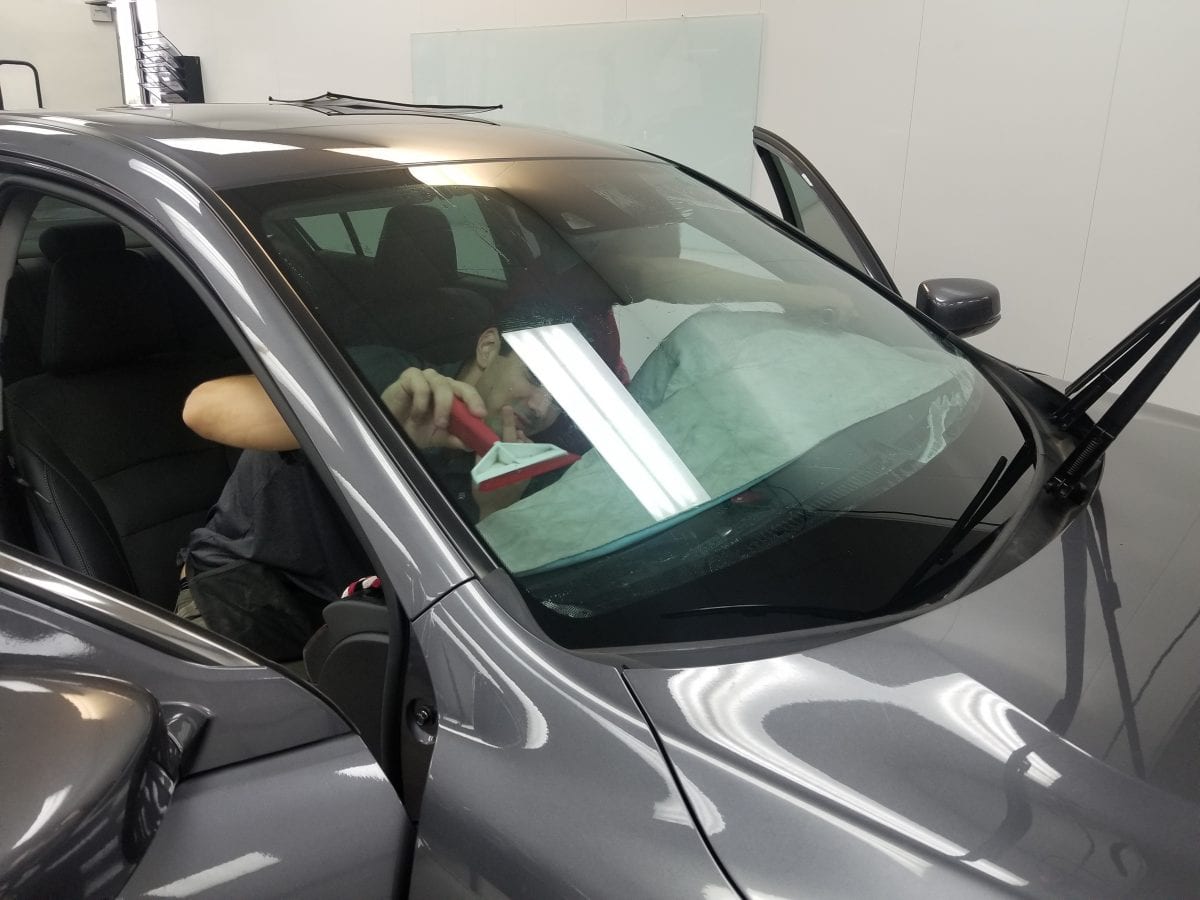
Let’s explain the four most common window tint types and what truly stands up to the desert sun.
Dyed Tint
Think of dyed tint as the starter pack. It gives your windows a darker look and some glare reduction, but it’s mostly cosmetic. While it can absorb a bit of heat, it doesn’t effectively block UV rays or infrared heat. That means your interior still gets cooked, and your A/C works overtime.
It’s cheap and looks okay, but it won’t provide the heat protection you need in Arizona.
Metalized Tint
Metalized tint adds a thin layer of metal that reflects heat and UV rays. It’s a step from dyed film, offering better heat rejection and durability. But here’s the catch: metal can interfere with GPS, phone signals, and your radio.
If you drive a Tesla, BMW, or any tech-loaded ride, this type of film might cause more problems than it solves. Also, its shiny finish isn’t for everyone, and can sometimes raise legal concerns about reflectivity.
Ceramic Tint
This is where things get serious. Ceramic tint is the top performer in heat rejection and UV protection, without sacrificing visibility or tech compatibility.
It blocks up to 99% of UV rays and up to 60% of infrared heat while maintaining a clean, non-reflective look. It’s also incredibly durable and doesn’t fade over time.
Yes, it costs more. But for Arizona drivers who want real performance, comfort, and long-term value, it’s absolutely worth it.
Carbon Tint
Carbon tint sits between metalized and ceramic. It offers good heat and UV protection, doesn’t interfere with electronics, and has a cool matte finish. It’s more affordable than ceramic and more effective than dyed.
It’s a solid option, but ceramics are still the king of the desert if you want the best heat protection.
Legal Limitations for AZ Tints: What You Need to Know
Here’s a quick guide to understanding Arizona’s legal tint limits so you can upgrade your ride correctly.
VLT Requirements by Window
Arizona law focuses heavily on Visible Light Transmission, the percentage of light passing through your windows. The lower the VLT, the darker the tint.
Here’s the legal breakdown:
- Front Side Windows: Must allow 33% or more light in
- Back Side Windows: Any darkness is allowed
- Rear Window: Any darkness is allowed as long as you have dual side mirrors
That means while you can go pretty dark in the back, your front side windows must remain relatively transparent to stay legal.
AS-1 Line for Windshields
Regarding the windshield, Arizona law allows non-reflective tint only above the AS-1 line, a manufacturer-marked line running horizontally across most windshields.
If your windshield doesn’t have an AS-1 mark, the general rule is: tint no lower than 5 inches from the top. Anything below that could put you in violation, even if it’s a light strip meant to reduce glare.
Enforcement & Compliance Tips
Arizona police enforce tint laws, especially in cities like Phoenix, Mesa, and Scottsdale. Officers may use a tint meter during a stop, and if your film is darker than allowed, you could receive a fix-it ticket or fine.
To avoid issues:
- Choose a professional installer who knows Arizona’s tint laws inside and out
- Avoid DIY or out-of-state films that don’t meet local standards
- Keep documentation of your tint specs—especially for medical exemptions, if applicable
Remember: legal doesn’t mean basic. With Smart Film, you get legal car window tint that performs like luxury gear because protection should never come at the cost of your tranquility.
Contact Us!
Our expert window tinting and paint protection film services in Mesa, Tempe, Gilbert, and the surrounding Arizona metro area will keep your car cooler, protect your loved ones from UV rays, and maintain its pristine condition. Contact our offices to find out more about our services or receive an estimate on car window tinting in Arizona.
